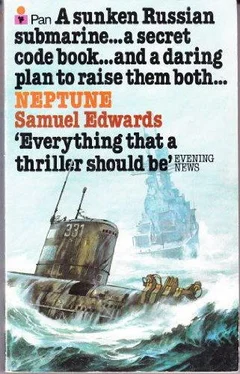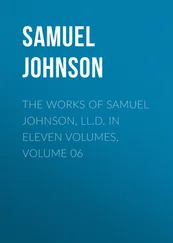Samuel Edwards - Neptune
Здесь есть возможность читать онлайн «Samuel Edwards - Neptune» весь текст электронной книги совершенно бесплатно (целиком полную версию без сокращений). В некоторых случаях можно слушать аудио, скачать через торрент в формате fb2 и присутствует краткое содержание. Город: London, Год выпуска: 1978, ISBN: 1978, Издательство: Pan Books, Жанр: Шпионский детектив, Триллер, на английском языке. Описание произведения, (предисловие) а так же отзывы посетителей доступны на портале библиотеки ЛибКат.
- Название:Neptune
- Автор:
- Издательство:Pan Books
- Жанр:
- Год:1978
- Город:London
- ISBN:0-330-25006-X
- Рейтинг книги:4 / 5. Голосов: 1
-
Избранное:Добавить в избранное
- Отзывы:
-
Ваша оценка:
- 80
- 1
- 2
- 3
- 4
- 5
Neptune: краткое содержание, описание и аннотация
Предлагаем к чтению аннотацию, описание, краткое содержание или предисловие (зависит от того, что написал сам автор книги «Neptune»). Если вы не нашли необходимую информацию о книге — напишите в комментариях, мы постараемся отыскать её.
The Russian atomic submarine ZOLOTO lies crippled and abandoned on the bed of the South China Sea. The secrets entombed inside are vital to both east and west. A custom-built super-dredger NEPTUNE assembled under maximum secrecy and plagued by agents of Soviet Russia and Red China, is bound on a clandestine salvage operation to capture the prize that could mean nothing less than world domination…
Neptune — читать онлайн бесплатно полную книгу (весь текст) целиком
Ниже представлен текст книги, разбитый по страницам. Система сохранения места последней прочитанной страницы, позволяет с удобством читать онлайн бесплатно книгу «Neptune», без необходимости каждый раз заново искать на чём Вы остановились. Поставьте закладку, и сможете в любой момент перейти на страницу, на которой закончили чтение.
Интервал:
Закладка:
‘I can’t help you if you’re concealing something from me,’ he said.
‘I’m not!’ Her eyes were wide, her tone emphatic.
Porter had his reservations, and made up his mind to tell their KGB guards what had happened. The Russians would go to great lengths to protect them from Chinese intelligence until they reached Singapore, if that was indeed their destination, and for the moment they would be safe. Each hour’s grace was a free gift, and espionage operations made strange bedfellows, both literally and figuratively.
Eleven
U-shaped Umatac Bay on the island of Guam had seen the ships of many nations since Magellan, according to legend, had first landed there in 1521, bringing the dubious benefits of western civilization to the native Chamorros, a people of mixed Tagalog, Melanesian, and Indonesian stock. Over the centuries the natives of this southernmost of the Mariana Islands had known so many conquerors and seen so many warships they had learned that the best way to stay healthy was to mind their own business. So few paid much attention to the huge vessel anchored just inside the mouth of the harbour.
Armed forces of the United States made certain that the curiosity of residents and visitors alike was restrained. The Army maintained an observation post at the peak of Mount Balanos, a 1,200 foot hill directly behind the harbour. Air Force fighter planes kept the skies overhead clear, and a squadron of Navy patrol boats kept outrigger canoes and other small craft at a respectful distance. Official barges bearing supplies of fresh meat, fruit, and vegetables carried complements of Marine guards who prevented verbal or physical contact between the food handlers and those on board.
Only Captain Humphries and Adrienne Howard were allowed to go ashore, and a Coast Guard cutter took them to the Navy base, where sheaves of messages awaited them and they had the opportunity to get in direct touch with Washington. The passengers, officers, and crew of the Neptune were directed to remain on board, and once they had glimpsed the clusters of small buildings, the jungle, and the relatively few acres under cultivation, they drifted away from the railing.
Many of the passengers elected to stretch out in deck chairs and take advantage of the perfect weather. The sun was hot, but the humidity was low and the trade winds, dry and cooling, blew steadily. Other islands portrayed themselves as Paradise, but Guam, just building its hotels, restaurants and recreational facilities, actually deserved the title. Within a few years it would be overrun by tourists, who would soon take it for granted as they already did Tahiti, Fiji and other remote places almost inaccessible before the days of the jumbo jets.
In mid-afternoon Captain Humphries and Adrienne returned to the Neptune, the latter depressed because she had learned from Corporation headquarters that Porter had vanished after he and Nancy Wing had flown from Havana to an unknown destination. Late in the afternoon a giant cargo plane with Air Force markings circled Guam, then came in for a landing, and there was a burst of activity. Within the hour tarpaulin-covered barges, all manned exclusively by Marines, made their way across the harbour to the Neptune.
The barges were transporting a number of wrapping-shrouded packages, many of them thirty feet long, ten feet wide and flat. Franklin Richards, aided by a corps of assistants, carefully inspected the contents of each package in the open aft hold of the Neptune before allowing the next to be hoisted on board.
The task, performed with meticulous attention to detail, lasted for several hours, and shortly after it was completed the sun sank with the abruptness typical in the tropics, with the brief twilight giving way to a star-studded night. A three-quarters moon was rising by the time the Neptune weighed anchor and sailed.
Richards was so eager to assemble the submersible float that he and his associates postponed dinner. The ungainly craft that resembled a football field was joined together, section by section, and the metal fused in the special process that had been developed and perfected in the Richards shipyard. After the last portion was welded into the whole a derrick was used to turn the submersible upside down and the more delicate operation of attaching the gasoline compression chamber was undertaken.
It was midnight before this work was done, and finally the men went off to eat. They volunteered to return to the hold, but Richards preferred to curb their enthusiasm. They were tired and he wanted no mistakes made that might be caused by fatigue, so he suspended operations until morning.
After an early breakfast the experts returned to their labours, installing the sonar and closed-circuit television systems that would provide the submersible with its eyes and ears. The success of the entire project would depend upon the accuracy of these instruments, so Richards took his time, and each step in the procedure was checked thoroughly before the nest was undertaken.
That phase required two days of work, and was followed by the equally complicated task of installing the electromagnetic system which would provide the submersible with its muscle. All that remained to be done thereafter would be to fill the hollow lip of the craft with the iron shot that would be released at the bottom of the sea to permit the barge to rise again. This operation could not be performed until the last possible moment, however, as the iron would have to be treated in order to render it anti-magnetic.
The Neptune sailed due west from Guam, and ultimately would circle north around Luzon, at the top of the Philippine archipelago as it headed into the South China Sea. Even this route had been selected with great deliberation, and although it was longer by several hundred miles than a voyage farther south, numerous small islands would be avoided and the exact location of the ship at any one time would be more difficult for potential spotters to determine.
Richards was anxious to drop the submersible into the water and tow it behind the Neptune, but Adrienne vetoed the idea and was supported by Captain Humphries. There would be ample opportunity to correct imbalances in the craft’s performance after they reached the South China Sea itself, she said, and the less time the submersible was actually afloat the less opportunity there would be for outsiders to photograph it from the air and guess its mission.
In spite of this temporary setback Richards and his associates knew that the climax of their many months of planning and labour was coming to an end. They were drawing nearer to their goal, and within a few days they would learn whether they would succeed in a bizarre venture that no men before them had ever attempted.
Obviously the Russians were not responsible for the attempt to murder Nancy Wing. The members of the aeroplane’s cabin crew were augmented by a half-dozen other men, who appeared out of nowhere, and during the four days the party remained at Port
Moresby the KGB ‘guests’ were given the protection worthy of a chief of state.
Agents were stationed around the clock in the garden beneath the windows of their suite, another stood guard in the hotel corridor and, whenever they left the hotel, they were surrounded by a cordon that accompanied them to local restaurants or on brief shopping expeditions.
Porter could form only one firm conclusion: the KGB, whatever it had in store for him, wanted to ensure that he and the girl reached their destination safely. The cabin steward, who appeared to be in charge, was awaiting instructions from Moscow, and he shared Porter’s lack of appreciation of whatever pleasures Papua New Guinea offered visitors. Porter could only guess that the man’s superiors were telling him little more than he was passing along to the passengers he was transporting.
Читать дальшеИнтервал:
Закладка:
Похожие книги на «Neptune»
Представляем Вашему вниманию похожие книги на «Neptune» списком для выбора. Мы отобрали схожую по названию и смыслу литературу в надежде предоставить читателям больше вариантов отыскать новые, интересные, ещё непрочитанные произведения.
Обсуждение, отзывы о книге «Neptune» и просто собственные мнения читателей. Оставьте ваши комментарии, напишите, что Вы думаете о произведении, его смысле или главных героях. Укажите что конкретно понравилось, а что нет, и почему Вы так считаете.












